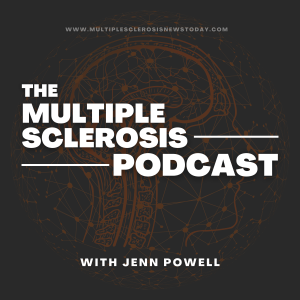NfL Mirrors Some Life Quality Aspects Felt by Patients, More Work Needed

Levels of neurofilament light (NfL), a protein marker of neuronal damage, appear to capture some aspects of patient‐perceived physical and functional abilities with multiple sclerosis (MS), as well as their utilization of select healthcare services, a real-world study suggests.
Its researchers, however, stress that more work is needed before NfL levels might be considered a relevant biomarker of a patient’s general quality of life.
The study, “Serum neurofilament levels and patient‐reported outcomes in multiple sclerosis,” was published in the Annals of Clinical and Translational Neurology.
NfL is a protein found in neurons that is released when these nerve cells become damaged. As such, NfL has emerged as a marker of neuronal damage in MS and other conditions.
Prior studies have shown an association between NfL levels and various aspects of MS, such as brain atrophy and neurologic function. However, the association between NfL and patient-reported outcomes (PROs) — which includes their perceptions of their disease status, and treatment response — with MS is not well-defined.
 Check out the new MS News Today podcast
Check out the new MS News Today podcast
To address this, a team led by researchers at the Brigham Multiple Sclerosis Center, part of Brigham and Women’s Hospital, analyzed the relationship between PROs and serum (blood) NfL levels in 304 MS patients (mean age of 32.9 at disease onset). All had serum samples and PRO measurements collected between 2011 and 2016.
Most of these people had relapsing-remitting MS (257), while 20 others had secondary progressive disease, nine had primary progressive MS, and 17 had clinically isolated syndrome. One other patient had what was defined in this study as “primary relapsing” disease.
Of this group, 104 individuals had data from a follow‐up visit (including PRO measures) one year later and 107 from a follow‐up visit two years later.
Initial (baseline) NfL levels were associated with patients’ age, as they increased with age. The levels ranged from a mean value of 6.97 picograms per milliliter (pg/mL) in individuals ages 25–35, to 10.7 pg/mL in those older than 55. Baseline NfL levels were significantly higher in females (9.2 pg/mL) in than in males (7.65 pg/mL).
Baseline NfL levels showed some associations with baseline PROs, most notably with physical functioning. However, these associations were not statistically significant after adjusting for factors like age and disability.
“This suggests there are many complex factors that contributed to patient quality of life and direct assessment remains the best way to capture them,” the team wrote.
Regarding healthcare use, baseline NfL levels were significantly associated with the number of intravenous (into-the-vein) steroid infusions an individual received over the subsequent year. This suggested that NfL levels “may be a good, clinically relevant marker of secondarily health care utilization,” the researchers wrote.
No significant correlations were found between NfL and other healthcare resource measures, like the number of outpatient visits or inpatient stays.
In other analyses, the researchers assessed how well NfL levels at baseline and 24 months reflected PROs at 24 months. The results revealed statistically significant associations between NfL levels and social functioning, and role physical functioning (being physically able to fulfill one’s role in the home or in society).
Fatigue, depression, and work productivity were not significantly associated with NfL levels in these analyses.
“While there may be a correlation between sNfL and some longitudinal quality of life values especially physical functioning, sNfL may not be immediately sensitive to many potentially distant aspects of quality of life,” the researchers wrote. Further studies are needed.






